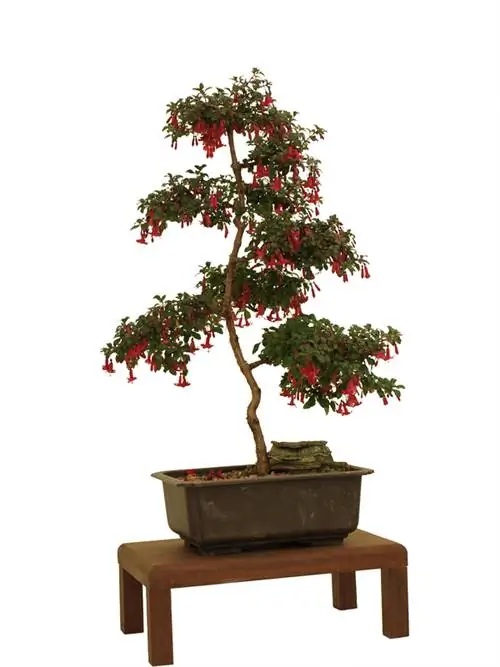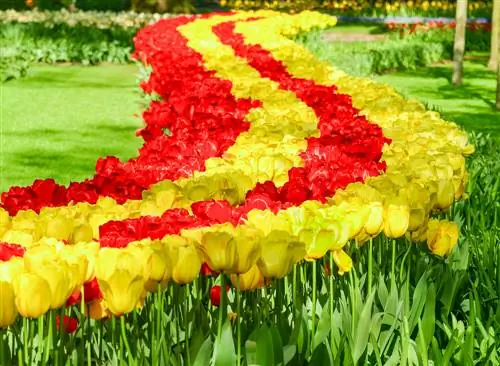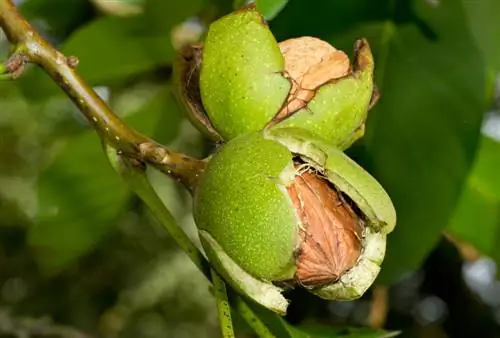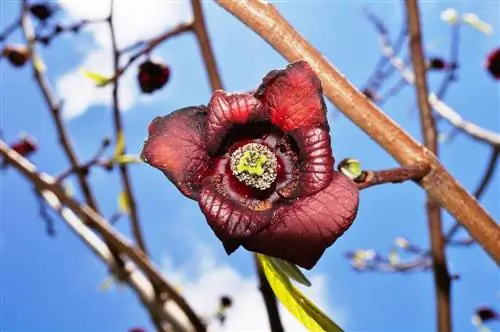- Author admin [email protected].
- Public 2023-12-16 16:46.
- Last modified 2025-01-23 11:20.
Fuchsias are quite widespread as an ornamental plant, but the bushy-growing shrub with the characteristic flowers is particularly popular as a pot and hanging basket plant. Fuchsia bonsai, on the other hand, are quite rare because the plants are quite demanding in terms of location, substrate and care. As long as you pay attention to the special needs of the fuchsia, nothing stands in the way of training it as a bonsai.
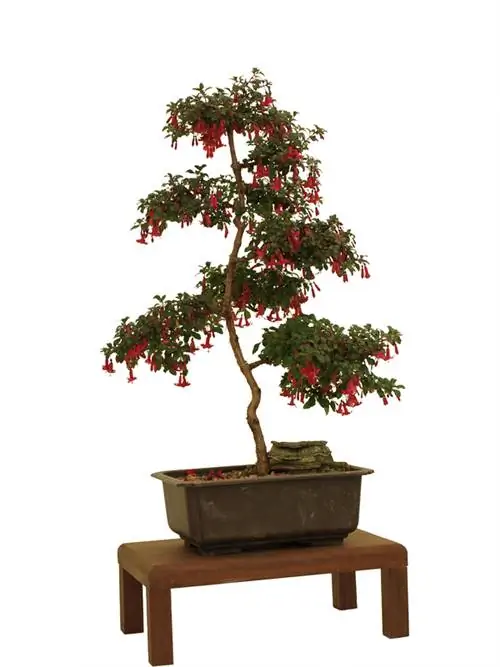
How do I grow a fuchsia bonsai?
To grow a fuchsia bonsai, choose an upright fuchsia variety, shape the bonsai by pruning, use a water-retaining substrate and care for it with sufficient water and nutrients. The location should be shady and kept cool in winter.
Selecting the fuchsia species and variety
Basically, all upright fuchsia varieties are suitable for creating a bonsai; semi-hanging specimens can also be trained accordingly. A suitable starting material is either a cutting from an existing plant or you can buy a plant from a garden center - fuchsias are sold there, especially in spring. However, if it is a rather rare variety, you can contact specialist dealers who specialize in fuchsias.
Design options
Bonsai are usually brought into the desired shape with the help of cutting measures and wires. However, fuchsias may only be formed into bonsai by means of training pruning, as wiring is not possible due to the rather porous structure of the shoots - the branches and twigs would simply break in such an attempt. This makes the appropriate pruning and training cuts all the more important, because a dense crown only develops if there are many fresh shoots. To get the thickest trunk possible, keep the leaf mass as large as possible at low heights.
Care for fuchsia bonsai properly
When caring for a fuchsia bonsai, it is particularly difficult to provide the correct supply of water and nutrients. Bonsai are traditionally cultivated in shallow planting bowls, which, however, have a serious disadvantage: the substrate dries out quickly, especially in summer, which has fatal consequences for the more moisture-loving fuchsias. It is therefore best to use a substrate that can store water at the same time, but does not cause waterlogging. A mixture ofis suitable for this
- 1 part potting or universal soil
- 1 part sand
- 1 part clay granulate (€19.00 at Amazon) (e.g. Seramis)
- 1 part peat soil
and about one or two handfuls of ripe compost. Always keep the substrate slightly moist and, if possible, do not place the bonsai in direct sun, but rather in light shade. In winter, even hardy fuchsia varieties should not overwinter outdoors, but in cold house conditions at eight to ten degrees Celsius.
Tip
Bonsai roots should be grown as densely and close to the trunk as possible, which is why you should keep the plant pot as small as possible and also carry out root pruning regularly.

